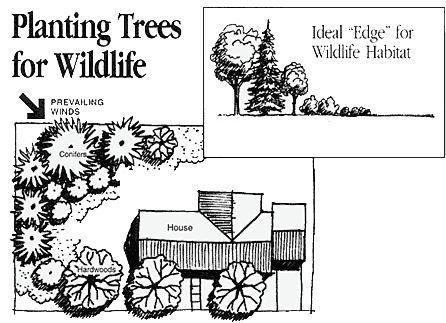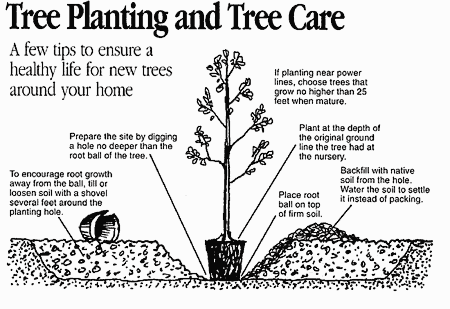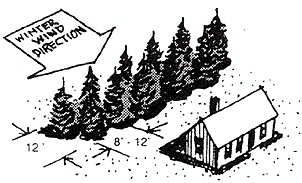Don’t Top Trees
Cutting branches back to ugly stubs is one of the worst things you can do for your tree’s health. Topping destroys a tree’s beauty and seriously reduces its ability to survive. Tree care professionals say that topping – cutting main branches back to stubs – is the worst thing you can do for the health of a tree. Your trees will lose their natural appearance, and the ugly, weakly-attached new limbs often grow back higher than the original branches. And these new limbs are more likely to be hazardous to people and property nearby. For a free copy of Tree City USA Bulletin #8, Don’t Top Trees!, write The National Arbor Day Foundation, 100 Arbor Ave., Nebraska City, NE 68410.
4 Good Reasons Why NOT to “Top”
- Tree Starvation: Topping removes so much of the tree’s leafy crown that it dangerously reduces the tree’s food-making ability.
- Insects and Disease: The exposed ends of topped limbs are highly vulnerable to insects or decay fungi.
- Weak Limbs: New branches that grow from a stubbed limb are weakly attached and more likely to break from snow or ice weight.
- Rapid New Growth: Instead of controlling the tree’s height, topping often results in more numerous, higher growing limbs than before.
The natural beauty of songbirds, squirrels, and other wildlife plays an important role in our neighborhoods and near our homes. By understanding a few basic principles, you can help attract desirable wildlife to your home or neighborhood.

Whether a song sparrow, a squirrel, or a butterfly, the key to their presence is habitat – places that will supply three essential elements for life:
- Food – each kind of tree or shrub has a different food value and attracts different animals. Having a wide variety of plants with high food value is the best single way to increase wildlife near your home.
- Water is as essential for wildlife as it is for humans. A small pond, a dripping faucet, or a bird bath will provide this vital liquid.
- Cover – dense plantings will provide birds and animals with the protection they need for breeding, nesting, sleeping, traveling, and hiding from enemies.
Useful Vegetation Patterns for Wildlife
- To see more birds and provide for their safety, plant cover trees or shrubs within 10 to 15 feet of water sources.
- When possible, provide unbroken travel lanes (rows of trees, hedges, a brushy fence row, etc.) between wooded areas.
- Provide “edge” areas where woods or shrubbery meet a lawn or old field. Edge areas provide a combination of food, sunlight, shade, and security.
For a free copy of Tree City USA Bulletin #13, Trees for Wildlife, write to The National Arbor Day Foundation, 100 Arbor Ave., Nebraska City, NE 68410.

Planting a tree is an act of optimism and sharing. It is the one act within reach of nearly every man, woman, and child to improve the environment and make this world a better place. Proper planting – the kind needed to give a tree a good start and help ensure its continued health and long life – will help your trees grow more rapidly and live at least twice as long as improperly planted trees. Watering is the key to survival of a newly planted tree. Be sure to water when filling the planting hole to eliminate large air cavities, firm the soil around fine roots, and make nourishment available to the tree. Water deeply around your tree once a week during dry spells. For a free copy of Tree City USA Bulletin #19, How to Select and Plant a Tree, write to The National Arbor Day Foundation, 100 Arbor Ave., Nebraska City, NE 68410.
Mulch — a Tree’s Best Friend
Mulching — by placing bark, wood chips, or other materials on the soil around the tree — will help retain moisture, control weeds and grass, keep lawnmowers away, and simplify maintenance. Keep mulch away from the tree’s trunk.
Plant Trees to Conserve Energy
An evergreen windbreak on the north or northwest will help block cold winds in winter. Large shade trees on the southeast, southwest, and west sides of the house provide cooling shade in summer but don’t obstruct the low winter sun.
Maximum shade comes from deciduous (broad-leaf) trees, planted close to the house (about 10 feet). Remember: short flowering trees won’t clash with utility lines. Shade from trees improves human comfort, reduces air conditioning costs, reduces peak electricity loads, lessening the chance of power outages.
Trees are an inexpensive way to save energy costs year-round!
Plant trees for winter warmth. Conifers form the best windbreaks. Two or more rows are best if space allows, but even a single row will help. Planting trees can produce significant cash savings when they are properly used for shade and winter wind protection. Studies show that shade trees can produce savings of more than 50 percent in air conditioning use and associated energy costs. The contribution of trees in winter may not be as obvious, bust can be just as dramatic. Homes that use windbreaks can save as much as 17 percent on heating bills. For a free brochure, How Trees Can Save Energy, write The National Arbor Day Foundation, 100 Arbor Ave., Nebraska City, NE 68410.

Plant the Right Tree in the Right Place

| Tall Trees | Medium Trees | Small Trees |
|---|---|---|
| Maple, Oak Spruce, Pine | Washington Hawthorn Golden Raintree | Redbud, Dogwood Crabapple |
Taller trees should be planted away from overhead utility lines.
Trees are prized possessions in our communities. They give needed shade in summer, help clear the air of pollutants, provide a home for songbirds and wildlife, and please the eye with the beauty of their foliage and blossoms. But when a tree’s branches start to come close to or actually touch utility power lines, a potentially hazardous situation is created. Trees and power lines can co-exist, and potential conflicts can be avoided by selecting and planting trees with size and growth characteristics appropriate to their location. For the Low Zone (beneath power lines and for 20 feet to either side of them) plant species that will not exceed 25 feet in height. Taller existing trees in this zone should be pruned to grow around the wires by the utility company.
